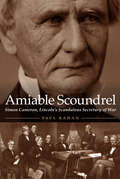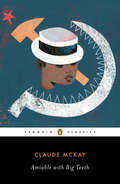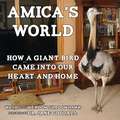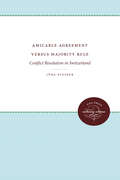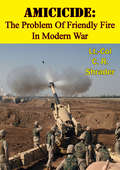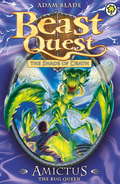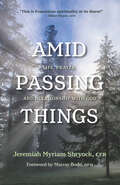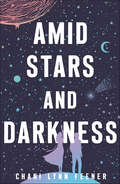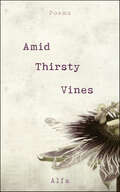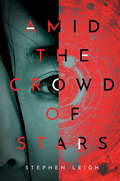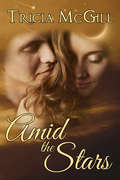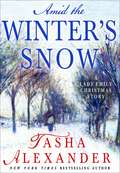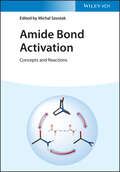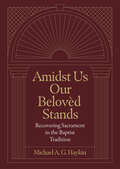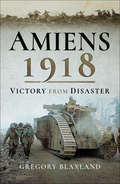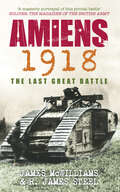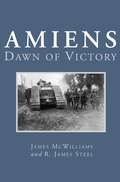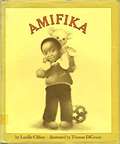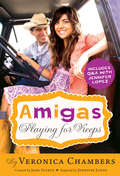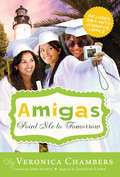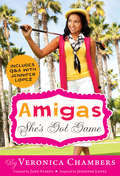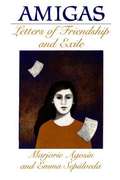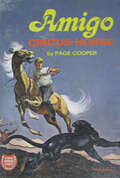- Table View
- List View
Amiable Scoundrel: Simon Cameron, Lincoln's Scandalous Secretary of War
by Paul KahanFrom abject poverty to undisputed political boss of Pennsylvania, Lincoln’s secretary of war, senator, chair of the Senate Foreign Relations Committee, and a founder of the Republican Party, Simon Cameron (1799–1889) was one of the nineteenth century’s most prominent political figures. In his wake, however, he left a series of questionable political and business dealings and, at the age of eighty, even a sex scandal. Far more than a biography of Cameron, Amiable Scoundrel is also a portrait of an era that allowed—indeed, encouraged—a man such as Cameron to seize political control. The political changes of the early nineteenth century enabled him not only to improve his status but also to exert real political authority. The changes caused by the Civil War, in turn, allowed Cameron to consolidate his political authority into a successful, well-oiled political machine. A key figure in designing and implementing the Union’s military strategy during the Civil War’s crucial first year, Cameron played an essential role in pushing Abraham Lincoln to permit the enlistment of African Americans into the U.S. Army, a stance that eventually led to his forced resignation. Yet his legacy has languished, nearly forgotten save for the fact that his name has become shorthand for corruption, even though no evidence has ever been presented to prove that Cameron was corrupt.Amiable Scoundrel puts Cameron’s actions into a larger historical context by demonstrating that many politicians of the time, including Abraham Lincoln, used similar tactics to win elections and advance their careers. This study is the fascinating story of Cameron’s life and an illuminating portrait of his times.
Amiable with Big Teeth
by Brent Hayes Edwards Claude Mckay Jean-Christophe CloutierA monumental literary event: the newly discovered final novel by seminal Harlem Renaissance writer Claude McKay, a rich and multilayered portrayal of life in 1930s Harlem and a historical protest for black freedom<p><p> The unexpected discovery in 2009 of a completed manuscript of Claude McKay’s final novel was celebrated as one of the most significant literary events in recent years. Building on the already extraordinary legacy of McKay’s life and work, this colorful, dramatic novel centers on the efforts by Harlem intelligentsia to organize support for the liberation of fascist-controlled Ethiopia, a crucial but largely forgotten event in American history. At once a penetrating satire of political machinations in Depression-era Harlem and a far-reaching story of global intrigue and romance, Amiable with Big Teeth plunges into the concerns, anxieties, hopes, and dreams of African-Americans at a moment of crisis for the soul of Harlem—and America.
Amica's World: How a Giant Bird Came into Our Heart and Home
by Jane Goodall Meadow Shadowhawk Washo ShadowhawkAmica is a rhea-a flightless bird in the ratite family, related to ostriches, emus, and kiwis. Amica was adopted as a young chick and in turn quickly adopted mother and son Meadow and Washo Shadowhawk as his flock and made himself at home in their living room.Now an adult, Amica stands nearly six feet tall, and has a six-foot wingspan. By day he roams the backyard, exploring, running, and building nests, along with his friends the chickens and the dog. At night, he watches television and sleeps in the living room with his friend the cat.What's it like living with a rhea? As you'll discover in the words and photos in this book, it is never boring, and requires massive sacrifices. Rheas, which are typically hunted or raised as livestock, are highly intelligent and expressive, with a humanlike range of emotions. Amica's extraordinary story shows the powerful and surprising connections that can be forged between humans and animals.
Amicable Agreement Versus Majority Rule: Conflict Resolution in Switzerland
by Jürg SteinerWhen the German edition of Steiner's masterful analysis of Switzerland's political system was first published in 1970 as Gewaltlose Politik und kulturelle Vielfalt, it was greeted by the American Political Science Review as a laudable departure from conventional comparative series." This new edition, extensively revised and expanded, makes Steiner's innovative study available to political theorists in the English-speaking world."Originally published 1974.A UNC Press Enduring Edition -- UNC Press Enduring Editions use the latest in digital technology to make available again books from our distinguished backlist that were previously out of print. These editions are published unaltered from the original, and are presented in affordable paperback formats, bringing readers both historical and cultural value.
Amicicide: The Problem Of Friendly Fire In Modern War [Illustrated Edition]
by Lt.-Col C. R. ShraderIncludes 10 detailed tables'War is often depicted in the textbooks as a well-orchestrated, albeit violent, exercise in which opposing units strive to achieve tactical and strategic objectives. That each side will suffer casualties in the process is taken for granted; they are the inevitable, if regretable, consequence of such a deadly undertaking. That each side is almost certain to suffer casualties inflicted by its own forces is not generally taken for granted. Yet, in each of America's wars, especially those of the twentieth century, a significant number of soldiers have been killed or wounded as the result of friendly fire. The fact that the percentage of casualties resulting from friendly fire from World War I through Vietnam has been extremely low does not make the accidental killing or wounding of one's own troops any less tragic or unpalatable. Nor does it offer much consolation to the commander responsible for the lives of his troops or to the soldier who runs the risk of falling victim to the fire of his own forces.To be sure, each branch of the Army and each of the Armed Services employ measures calculated to prevent incidents of friendly fire...Before one can undertake a serious and comprehensive analysis of friendly fire, these data must be found and brought together in one place.In Amicicide: The Problem of Friendly Fire in Modern War, LTC Charles R. Shrader has taken a major step toward the compilation of these data. In his well-informed narrative, he draws tentative conclusions about the causes and effects of friendly fire and offers recommendations for those who expect to study the subject further. He has, in short, produced a superb reference book and a springboard for a deeper and more comprehensive analysis of this grim and complex problem.'-Foreword
Amictus the Bug Queen: Series 5 Book 6 (Beast Quest #30)
by Adam BladeTom's quest to free the Mistress of the Beasts brings him to a sweltering jungle. There he must defeat cunning Amictus. But what chance does Tom have against the Beast's incredible speed? And what is the secret his father and Wizard Aduro are keeping from him?Don't missKRABB, MASTER OF THE SEA - HAWKITE, ARROW OF THE AIR - KOLDO THE ARCTIC WARRIOR - ROKK THE WALKING MOUNTAIN - TREMA THE EARTH LORD
Amid Passing Things: Life, Prayer, and Relationship with God
by Murray Bodo Jeremiah Myriam ShryockAmid Passing Things is a collection of meditations on all the ways God enters our lives, even when we're unaware. Based on his own life experiences, Franciscan friar Jeremiah Shryock offers both struggles and joys that come in a life that's consciously encountering God—the Holy One all around us—not in some far-off place, but right here and now in this life, amid passing things.
Amid Stars and Darkness (The Xenith Trilogy #1)
by Chani Lynn FeenerAliens? Old news. Being abducted by aliens and stuck on another planet with the fate of a few worlds and a hot alien bodyguard’s heart in your hands? Now that’s another story. Delaney is just a regular girl, but by the time anyone believes that she’s not the missing alien princess, Lissa Olena, she’s been kidnapped by the princess’ bodyguard, Ruckus, and imprisoned in an alien palace far away from everything she’s ever known. And until Olena can be found, Delaney’s case of mistaken identity will have to stay hidden. The consequences of failure? A bloody alien war and a hostile take over of Earth. No pressure or anything. If she could stay in Ruckus’ arms, the ruse might even hold up, but Trystan, the princess’ cruel, cunning betrothed is quite taken with his future bride’s new attitude and seems intent on unraveling all her secrets. To keep herself and her planet safe, Delaney will need to stay out of his way and off of his mind.
Amid Thirsty Vines: Poems
by AlfaThemes of self-discovery, tending the garden of the soul, and nurturing yourself into blossom, Amid Thirsty Vines by Instagram poetry star Alfa is the collection you need to feel the power of the beautiful flowers within you, and to find the love you deserve. This volume belongs in the collection of every modern poetry fan.
Amid the Crowd of Stars
by Stephen LeighThis innovative sci-fi novel explores the potential impact of alien infection on humankind as they traverse the stars and find themselves stranded on new and strange planets.Amid the Crowd of Stars is a grand scale science fiction novel examining the ethical implications of interstellar travel, a topic rarely addressed in science fiction novels. What responsibilities do we have to isolate ourselves from the bacteria, viruses, and other life of another world, and to prevent any of that alien biome from being brought back to Earth? What happens when a group of humans are stranded for centuries on another world with no choice but to expose themselves to that world? After such long exposure, are they still Homo sapiens or have they become another species entirely?These questions are at the heart of this intriguing novel, explored through the complicated lives and the viewpoints of the people who have come to rescue the stranded colony, the members of that colony, and the sentient alien life that dwells on the planet. Difficult life and death choices will be made by all involved.
Amid the Stars
by Tricia McGillTerrified, and in fear for her life after her husband, an undercover cop, is killed, Melanie Ross has nowhere to hide. A squadron from a far planet visiting Earth on a reconnaissance survey prepares to leave, without one of their members who is dying of a virus. Irena must remain on Earth, so seeks a replacement to take her craft back to the other side of the Universe. Seeing Melanie’s predicament she offers her an escape. Reluctantly Melanie agrees. Conquering her fears, she must learn to live among a superior race on Qindaga. Reve, commander of the star ship circling their planet, bears an inexplicable resemblance to her dead husband. Passion flares amid the stars, but can love with an alien flourish?
Amid the Winter's Snow: A Lady Emily Christmas Story (Lady Emily Mysteries)
by Tasha AlexanderIn Amid the Winter's Snow, an uplifting Christmas story in Tasha Alexander’s acclaimed series, Lady Emily and her husband Colin take on a case that proves the enduring power of love. Emily and Colin Hargreaves are looking forward to nothing more than spending a relaxing Christmas at their country estate, Anglemore Park, eating mince pies and playing with their sons in the falling snow. Their solitude is interrupted by a knock on the door one night, when the villagers of nearby Dunsford Vale come to them with strange tales of a barghest--a mythical black dog with red eyes and enormous teeth and claws--that has been wreaking havoc on the town. Never ones to be taken in by local superstitions, Colin and Emily team up to find an explanation behind the bizarre events. When a grieving young woman in town receives a mysterious and beautiful gift after a visit from the barghest, Emily and Colin begin to suspect that the beast is more man than monster. Racing through the candlelit streets of Dunsford Vale and the windswept heaths of Anglemore, the couple must follow the clues and uncover the truth to restore Christmas cheer.
Amide Bond Activation: Concepts and Reactions
by Michal SzostakAmide Bond Activation Comprehensive resource on the pivotal role of the amide bond in organic synthesis This book provides the reader with insight into the advances that have taken place in the field of amide bond activation. It focuses on both the fundamental structural properties of the amide bond and the synthetic reactions mediated by transition-metals. By discussing amide bond activation in terms of modern organic synthesis, the reader is provided with a thorough overview of the area and its crucial role in forging carbon-carbon and carbon-heteroatom bonds. Sample topics discussed within the work include: Cross-coupling of amides Amide bond activation by twisting and nitrogen pyramidalization Electrophilic amide bond functionalization Transition metal-catalyzed radical reactions of amides Amide bond esterification, hydrolysis and transamidation Classical bridged lactams and anomeric amides Computational studies of amide C-N bond activation Cross-coupling of esters by C-O activation The book is immensely valuable to synthetic chemists in academia and the pharmaceutical industry who wish to gain an in-depth understanding of the concept of amide bond activation.
Amidst Us Our Beloved Stands: Recovering Sacrament in the Baptist Tradition
by Michael A. G. HaykinBaptists are sacramental When it comes to baptism and the Lord's Supper, many Baptists reject the language of sacrament. As a people of the book, the logic goes, Baptists must not let tradition supersede the Bible. So Baptists tend to view baptism and Communion as ordinances and symbols, not sacraments. But the history of Baptists and sacramentalism is complicated. In Amidst Us Our Beloved Stands , Michael A. G. Haykin argues that many Baptists, such as Charles Spurgeon and other Particular Baptists, stood closer to Reformed sacramental thought than most Baptists today. More than mere memorials, baptism and Communion have spiritual implications that were celebrated by Baptists of the past in sermons and hymnody. Haykin calls for a renewal of sacramental life in churches today—Baptists can and should be sacramental.
Amiens 1918: From Disaster to Victory
by Gregory BlaxlandGregory Blaxland has written a superb account of 1918, the final year of the war when the balance of advantage between the combatants changed so dramatically in a matter of weeks that summer.As the realities of the changing nature of warfare by late 1917 made the retention of static lines, no matter how sophisticated, no longer a long term viable option for the defence; and with Russia knocked out of the war, the Germans under Hindenburg and Ludendorff determined on a bold series of major offensives, the first of which was aimed at the British Fifth Army with the objective of seizing Amiens, a crucial rail head and the city that marked the boundary between the BEF and the French. Capture this and the Germans had a good chance of separating the key allied powers. Despite almost destroying Fifth Army and advancing within ten miles of Amiens, the Germans failed in their objective; they turned to a number of other hard thrusts along the line but were foiled on each occasions.Reinforced by substantial numbers of American troops, the allies launched their first, French led, counter attack on 18 July, which many considered the turning point of the 1918 campaign and, indeed the whole war. Shortly afterwards, on 8 August, the BEF (with some French support) attacked with Fourth Army before Amiens and was stunningly successful what Ludendorff described as the Black Day of the German Army. There followed a sequence of blows by all the allies along the Western Front, pushing the Germans back to the borders; with her allies collapsing and with the Imperial Navy in a state of mutiny,The book largely concentrates on the British and Dominion troops of the BEF. The first half is taken up with the attack on Amiens (and, to a lesser extent, on Arras). In the second half of the book the author provides a cohesive account of the British response in retaking the initiative from the Germans, though not failing to give allied nations their due.Besides giving a full narrative account, he also provides a useful critical commentary of the performance of armies and generals.This is a welcome reprint of an accessible account of the crucial year of the war, when on the Western Front the conflict broke free of its entrenched deadlock. Despite the extraordinary achievements of the BEF in 1918, they still remain remarkably little known and even less appreciated.
Amiens 1918: The Last Great Battle
by James McWilliams R James SteelOn 8 August 1918, the Allied forces launched the surprise attack that heralded the end of the First World War. With skill and daring, 21 divisions of men breached the German lines, supported by 500 tanks and 1,000 aircraft. This book considers the successes and failures of both sides in this conflict.
Amiens: Dawn of Victory
by James McwilliamsIt was the decisive battle of World War I. German commander Erich Ludendorff called it "the black day of the German army." Many authors have stated that it was the beginning of the end of the great conflict. And yet, until now, no book has been published on the climactic battle at Amiens.Amiens was one of the first "modern" battles, and certainly the first attempted by the Allies. Employing the troops of five nations (including Canada) and utilizing secrecy, deception, and combined operations, the Allies won the first of a string of victories culminating in the Armistice one hundred days later.Amiens: Dawn of Victory is the first book to study the historic battle in minute detail. Using eyewitness accounts from dozens of survivors, plus many accounts, both published and unpublished, by the participants, the authors take us into the trenches, the tanks, and the cockpits.
Amifika
by Lucille Clifton Thomas DigraziaWhen Amifika hears that his mother is going to get rid of things his father won't remember, Amifika thinks he might be one of those things since he can't remember his father. So, he looks for a place to hide...<P><P>Jane Addams Children’s Book Award Winner
Amigas Playing for Keeps (Amigas #4)
by Veronica ChambersIt's time for some Texas-sized adventure for Amigas Incorporated! After throwing dozens of quinceaneras for strangers, friends, and plenty of quince-zillas, Alicia, Carmen, Jamie, and Gaz could use a vacation. Unfortunately, with all their time spent planning, they've forgotten to make their own plans--for Spring Break! So when Alicia's mom mentions she has a friend who wants to throw a quinceanera for her daughter--in Texas--the group figures they can combine fun and business. Soon they are heading South. Alicia is excited to meet her new client, Jamie is pumped she can see her boyfriend compete in a big golf tournament, Carmen is looking forward to hanging with her cousins, and Gaz is psyched to be attending the South by Southwest music conference and concert. But with so much going on, it is hard to stay on task. Will Alicia be able to rein in the group or will the drama have her heading for new pastures?
Amigas Point Me to Tomorrow (Amigas #6)
by Veronica ChambersAfter two years of planning the hottest quineaneras in Miami and beyond, the girls of Amigas Incorporated are facing their biggest challenge yet--high school graduation. While Carmen and Jamie know exactly what they want, Alicia is on the fence. Should she go to the school of her dreams even if it means doing exactly what has always been expected of her? Or should she try something new? With so many decisions to make, Alicia is beginning to feel like choosing a school is like preparing for a quince--without any of the fun. On top of it all, the group has gotten a mysterious request from a young woman who wants to throw the most secret of quinceaneras. The girl wants it to be so secret that she won't even tell them her name! Now the group must figure out how to throw the perfect party for a perfect stranger, nail the SATs, and figure out if there is anyone at the school willing and capable of taking on their business. Will it all work out? Or will the end of school mean the end of Amigas Incorporated?
Amigas She's Got Game (Amigas #3)
by Veronica ChambersAmigas have definitely arrived. Fresh out of the spotlight of their first television experience, the team is back and stronger than ever. But the heat is always on in Miami and when they get hired to do an unusual quince for a bratty debutante, the temperature goes sky high. As Alicia and her friends try to figure out how to throw a party for Miss Perfect, Jamie finds herself in a new situation--a romantic one! Turns out the debutante's brother is a total prince. But the prince is from a completely different world. Will Jamie be able to push aside her doubts and get swept off her feet? And will the Amigas perfect track record take a hit with a client who is NEVER happy?
Amigas and School Scandals
by Diana Rodriguez WallachHome Is Where The Drama Is. . . Mariana Ruiz is bringing a lot home from her vacation in Puerto Rico, including memories of a hot summer romance, a new understanding of her (sometimes crazy) family. . .and her cousin Lilly Sanchez, who's enrolling in Mariana's suburban Philadelphia high school. Mariana's best friends, Madison and Emily, aren't thrilled about the new arrival, especially when Lilly soars through the ranks of Spring Mills High's social circles. But Mariana has other things on her mind. Like Mariana's developing crush on her locker buddy, Bobby, the one boy to ever take Emily on a real date. But it's the revelations at Mariana's Sweet 16 party that make it clear that life at Spring Mills High School will never be the same again.
Amigas: Letters of Friendship and Exile
by Marjorie Agosin Emma SepulvedaThis collection of letters chronicles a remarkable, long-term friendship between two women who, despite differences of religion and ethnicity, have followed remarkably parallel paths from their first adolescent meeting in their native Chile to their current lives in exile as writers, academics, and political activists in the United States. Spanning more than thirty years (1966-2000), Agosín's and Sepúlveda's letters speak eloquently on themes that are at once personal and political—family life and patriarchy, women's roles, the loneliness of being a religious or cultural outsider, political turmoil in Chile, and the experience of exile.
Amigo: Circus Horse (Famous Horse Stories)
by Page CooperWhen Franz, fifteen-year-old son of the star rider in the circus, saw Amigo, a young palomino, he vowed that he would have that horse for his own and one day make him a great performer. So when Señor Gonzales, who owned Amigo, let Franz exercise him and teach him a few simple dressage steps, he was overjoyed. That was only the beginning, for Amigo was high-spirited, and you couldn't get near him with a saddle. But with the help of his friends, Mulk, the lion tamer's son, and Dizzy, the budding equestrienne from Argentina, Franz began to see his ambition realized. Around this warm story of devotion and friendship between boy and horse: is the exciting, colorful world of the circus, its people and animals. Meet Sadie the elephant, almost too old to perform any more, but not too old to start a stampede, and Mogul the panther, whose escape sent the circus into panic. And there is Madame Fawzia, the snake charmer, daughter of an old Indian medicine man, and the Locatellis, world's most daring aerialists. Here, amid the carnival music and the smell of hot dogs and cotton candy, is an inside look into the lifeblood of a circus: its human and animal performers.
